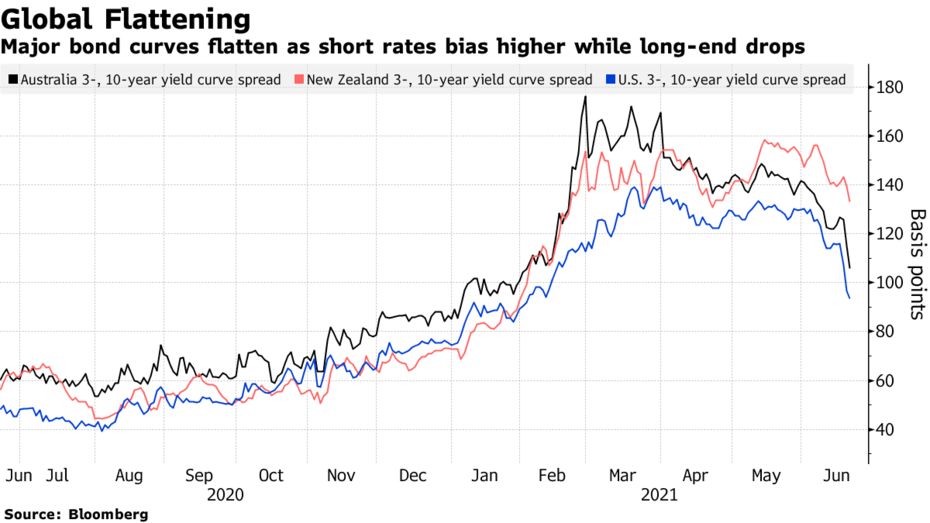Treasury 30-year yields dropped below 2% for the first time since February as traders continued to unwind reflation trades after the Federal Reserve’s hawkish pivot.
Thirty-year yields fell two basis points to 1.99%, while benchmark rates declined as much as three basis points to 1.40%, lowest since early March. Short-end yields edged up.
The spread between five- and 30-year notes tumbled last week to the narrowest for the year after the Fedprojectedtwo interest-rate increases by the end of 2023. The flattening move was aided by ascrambleto unwind curve steepeners, with the likes of Morgan Stanley and TD Securities stopped out of recommended trades, while Goldman Sachs analysts unwound outright 30-year short positions.
The shift creates room for other central banks to turn more hawkish without fueling excessive gains in their currencies, triggering a flattening in the yield curve elsewhere. Australia’s three- and 10-year spread is at the tightest since February and a similar trend was observed in New Zealand.
The FOMC’s rate outlook has pushed short-end rates higher while longer-end rates fall as traders calculate that there’s now little risk that U.S. inflation will remain above target for long. St. Louis Fed President James Bullard added fuel to the debate on Friday, warning thatinflation risksmay necessitate a rate hike next year.


